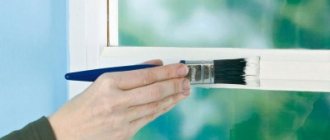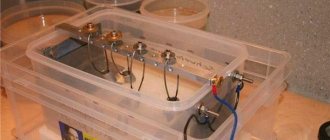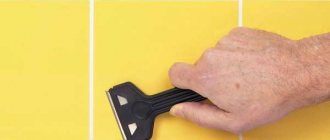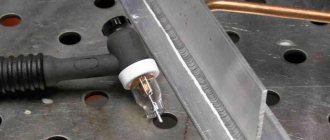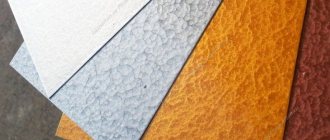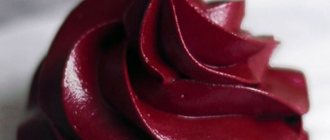Due to the poor quality of tap water, plaque often forms on plumbing fixtures. An increased concentration of iron salts sooner or later manifests itself as rust on surfaces that are often in contact with water. In addition, the majority of water supply systems are outdated, so even with normal iron levels, brown water may flow out of the tap. Rust on the bathroom is a particular problem: this is the most difficult type of plaque to remove, which is difficult to deal with without damaging the surface of the product.
General rules for rust removal
There are not many truly effective ways to remove rust, and they all rely on the use of acids. Alkaline products remove rusty deposits much worse. Soda, laundry soap and products like Belizna and Domestos have practically no effect on old rust.
The choice of method and means for cleaning depends on the intensity of plaque, the type of bath and its condition.
With regular and proper care, the surface of the bathtub is uniform, so it can be easily washed off from dirt. Neglected rust leads to gradual destruction of the surface by ingrained sediment. Accumulating layer by layer, hardness salts disrupt the structure of the coating and form a persistent and porous coating into which any contaminants easily penetrate. In this case, it will be extremely difficult to clean the bathtub from rust without completely ruining it, and it will be almost impossible to return it to its original shine and whiteness. Therefore, at the first signs of yellowness and rust, they must be dealt with by all available means.
Note: It is usually easier to wash off stubborn rust if it is combined with limescale: it responds well to acid and dissolves quickly enough, separating from the surface along with rusty deposits.
Recommendations for acrylic bathtubs
Acrylic bathtubs have a perfectly smooth, but prone to damage surface. If handled carelessly, it is easily scratched, and strong concentrated substances can corrode the product. The coating of an acrylic bathtub has no pores, so dirt does not penetrate into it, and cleaning agents are completely washed off with water. But the material is easily painted and can change color: due to rust, acrylic first appears yellow, and then a brown deposit.
Acrylic is not susceptible to corrosion, but it is difficult to wash off old plaque. Entrenched rust can only be removed with aggressive agents that are contraindicated for acrylic surfaces.
The following recommendations will help maintain the integrity of the acrylic coating when cleaning:
- To prevent the detergent from corroding the bathtub, use only special products for acrylic surfaces (there should be information about this on the packaging). For acrylic baths, there are special compositions based on fruit acids.
- Acrylic cannot be cleaned with metal brushes, scrapers or too hard sponges.
- The exposure time of cleaning agents must not be exceeded. Even gentle acidic compounds are best applied for no more than 30 seconds. If it is not possible to remove the plaque immediately, it is better to repeat the treatment after some time rather than overexpose the product and ruin the surface.
- Just in case, it is advisable to test all products on an inconspicuous area.
If you do damage it, here are instructions on how to restore the surface of the bathtub.
Basic rules you need to know
Any housewife is not particularly happy if she has to wash away stubborn limescale or rust stains. But all this can be avoided if you follow simple rules that even a child can follow:
- Clean the tub after each use.
- Deep clean your bathroom every week. To do this, treat plumbing fixtures and enamel with special products.
- Be especially careful when choosing a product. Choose the one that best suits your coating.
- When cleaning, do not use metal brushes or abrasives.
By following these simple rules, you will extend the life of your bath for a long time.
Features of cleaning enamel baths
Compared to acrylic, cast iron and steel bathtubs are not as sensitive to chemical and mechanical influences. But over time, even on well-groomed enamel, pores appear. If you regularly wash your bathtub with caustic agents, the pores will enlarge and microcracks will form on the surface. Because of this, the bottom and walls of the bathtub become rough and dull. In addition, the enamel coating is “afraid” of impacts and sharp objects: they form chips and cracks on the surface, into which dirt and plaque get clogged. In places where the enamel is peeled off or deeply damaged, the metal base will begin to rust over time, forming pockets of corrosion.
Note: If plaque appears around damaged areas of enamel, this is not the influence of tap water, but a product of corrosion. In this case, the damage is cleaned and treated with rust converters, and the bath is subsequently restored.
In general, the rules for washing enamel bathtubs are similar to those for acrylic products, but there are some differences:
- Cleaning agents must be suitable for enamel surfaces. You can also try those designed for acrylic, but they may be weak for enamel.
- Active rubbing with brushes (not metal) and soft abrasives is allowed.
- You should not try to clean or scrape plaque with sharp objects: there is a high probability of breaking off a piece of enamel or severely scratching it.
- It is permissible to treat an old cast-iron bathtub with worn enamel with abrasives and strong acids - this is the only way to wash it to a satisfactory condition. But you need to understand that the unpleasant roughness will not go away, and will only intensify over time. Therefore, it will be more difficult to clean the bathtub every time.
Depending on the situation, you can use folk recipes or household chemicals to remove rust.
Getting rid of urinary stones
Urine stone usually collects inside the bowl, where the water sits. These salt deposits accumulate, forming a thick brown layer that reduces the diameter of the drain and produces an unpleasant odor over time.
It is necessary to fight it at the initial stage, since it will be very difficult to get rid of large accumulations even with hard brushes. Here it is recommended to use chemicals with chlorine and other surfactants, as well as inorganic or organic acids.
Vinegar with soda
You can also fight urinary stones with baking soda and vinegar. In this case, you can even use a regular table 9 percent. You need to prepare a mixture of 1 tablespoon of baking soda to 1 glass of vinegar. It is heated to approximately 45°C and poured into the toilet overnight. The urine stone will soften and can be removed without any difficulty.
There are 2 more effective ways:
- ½ cup of soda is poured into the toilet bowl, and vinegar is carefully poured in. Spread the bowl evenly with this mixture and clean it with a brush after half an hour.
- Use a glass of vinegar to treat the entire inner surface of the toilet, after half an hour moisten the brush in it, which will then need to be sprinkled with a handful of soda. The procedure is repeated until the bowl is cleaned white. Compared to the first method, this one is not suitable for everyone due to the pungent vinegar smell.
If you do without soda, it is recommended to use vinegar essence with a concentration of 70%. Fill the bowl with it and leave for a couple of hours. The effect can be enhanced with a solution of iodine, then the ratio of these two components should be 1:1. In all cases, it is necessary to pump out the water with a plunger in order to fill the void.
Other methods
Other common options include:
- Use of citric acid. At night you need to pour the contents of several sachets into the toilet; it is recommended to leave it for 10-12 hours. It is not advisable to use plumbing during this period.
- Action of electrolytes. Urinary stones are removed in a few minutes, but this method is highly not recommended in the case of sewer lines made of plastic pipes - they can be damaged. Therefore, electrolytes are poured only if the house has exclusively metal wiring and other methods of getting rid of the stone were in vain.
Ready-made chemicals:
- Excellent fight against limescale and rust “Domestos Pink”. This gel in a black bottle has only one drawback - the strong smell of chlorine.
- “Cillit” has a curved spout, making it convenient to use around the toilet rim. Contains hydrochloric acid, most effective against old urinary stones and limescale.
- The same component is also contained in the “Toilet Duckling”. The gel is poured into the water in the toilet, left for half an hour, drained and observed for changes. If necessary, repeat the procedure.
Folk remedies
Homemade recipes for rust do not work well in advanced cases, but can be effective for well-maintained bathtubs and with fresh plaque. They are safe for acrylic and enamel products.
Vinegar
Vinegar products at hand help get rid of yellowness and newly formed rust. The most popular options are:
- Vinegar solution. 1 liter of 9% vinegar is diluted in a bath of warm water and the solution is left for 12 hours. This method is especially effective for acrylic bathtubs.
- Vinegar and salt. Use on rusty spots. The surface is sprinkled with salt and covered with a cloth or napkin soaked in heated vinegar. Leave for 1 to 2 hours and wipe off the rust with a sponge. The walls of the bathtub can be treated as follows: moisten a cloth with warm vinegar, dip it in finely ground salt and rub the stains.
Instead of 9%, you can use vinegar and a weaker concentration, as well as wine vinegar. But in this case the efficiency will be lower.
Lemon acid
Methods of use resemble recipes with vinegar:
- For acrylic baths: 2 – 3 packets of citric acid (25 g each) are diluted in a bath filled with warm water and left for several hours. The acid must be completely dissolved so that its crystals do not settle at the bottom.
- For all types of baths: citric acid powder is mixed with fine table salt and distributed over the rusty areas. The mixture can be sprayed on top with water heated to 50–60°C or covered with a napkin soaked in warm water. Leave for up to 1 – 2 hours. Undissolved crystals are removed with a sponge or the same cloth that was used for the “compress”; The remaining stains are wiped with it.
Coca Cola
The popular drink is used not only to descale a kettle, but also as a rust remover on a bathtub. The effectiveness of cola is explained by phosphoric acid, which is part of the original recipe. Moisten a cloth or towel generously with the drink and cover the areas with plaque. Leave for several hours and periodically wet the towel again (as it dries). The rust should dissolve and be easily cleaned off with the hard side of the sponge.
How to remove yellow or white plaque in the bathroom
There are several simple and effective ways to eliminate old yellow spots and white limescale:
Mustard powder and turpentine. To obtain a cleaning composition, you need to mix two parts of turpentine with one part of powder. The resulting paste is applied to stubborn stains. After 15 minutes, wash off the paste with water and wipe the surface with a soft sponge. The mixture copes well with yellow and white deposits on plumbing products.
Lemon acid. To remove a small yellow coating, you need to dissolve 10-15 grams of powder in 200 ml of warm water. Moisten the contaminated areas with a sponge or napkin and rinse with water. The procedure is repeated until the stain completely disappears.
Bleach. To clean white limescale, only powdered bleach is suitable, which is combined with water in equal parts and mixed to a paste. The paste is applied to problem areas and left until completely dry, after which it should be washed off with warm water. It is not recommended to use bleach with a high chlorine content - it can damage the enamel.
Lemon juice. Squeezed citrus fruit juice is applied to the yellowed surface. After 15-20 minutes, wash off the juice with warm water and wipe the cleaned area with a napkin or sponge. You cannot leave lemon juice on the surface of the product for longer than the specified period, otherwise the yellow stain will not disappear and it will be even more difficult to remove.
Vinegar with sodium tetraborate. Sodium tetraborate, better known as borax (can be purchased at pharmacies), is mixed in equal parts with vinegar until a thick paste is obtained. Using the resulting paste, use a sponge to scrub off the white or yellow coating until it completely disappears, then rinse the cleaned area with cold water.
Industrial products
Household rust removers contain different acids: oxalic, acetic, malic, citric, phosphoric. They are often combined, but single-component formulations are also found. Products for enamel and acrylic should not contain hydrochloric or formic acid - these substances are only suitable for ceramics and tiles.
The following brands offer safe anti-rust products:
- Unicum from rust and limescale. Spray against all types of contaminants, including rust. Suitable for acrylic and enamel surfaces, quickly removes even stubborn deposits.
Unicum spray against rust and plaque. - Dirtoff San Pro. Rust remover with antibacterial effect, without aggressive acids. Can be used on any surface and creates a dirt-repellent layer.
Dirtoff San Pro antibacterial product. - Pufas Glutoclean - rust stain remover. A gentle anti-rust spray for use on delicate surfaces, including enamel and acrylic products. Contains a rust neutralization indicator: when it reacts with plaque, it has a strong odor and changes color as the plaque dissolves. The surface to be treated must be dry. If the effect is insufficient, application of the product can be repeated immediately.
Rust remover Pufas Glutoclean. - HG Professional. An anti-limescale agent that is also effective against rust stains. Does not damage acrylic and enamel surfaces, does not corrode chrome and tile joints.
HG Professional plaque remover. - Neomid Anti-rust. Acid rust and corrosion remover. Suitable for use on enamel surfaces. Can be used as a rust converter.
Neomid Anti-rust. - Brand Professional. Thick product with a color neutralization indicator for plaque neutralization. Suitable for enamel baths.
Spray Brand Professional - Triton Acrylic Cleaner. Product based on organic acids. Cleans all types of dirt from acrylic products, provides shine and protection against plaque.
Triton Acrylic Cleaner.
Professional cleaning products
Cleaning old rust is often ordered to professionals. Cleaning companies use expensive and very effective means that are unfamiliar to most ordinary consumers. Professional cleaning products are not sold in household chemical supermarkets. Typically, such goods are purchased online in large quantities or in bulk upon pre-order.
Bath Acid Plus cleaning product.
You can use professional cleaning products to clean your bathtub from rust at home. The main thing is to remember that these are very concentrated formulations and before use they must be diluted with water in strict accordance with the instructions. When working with such products, be sure to wear protective gloves and a respirator.
Prevention
Any plaque is better washed off fresh. If you regularly remove household dirt, rusty sediment and cleaning with aggressive agents will not threaten your bathtub. To ensure that the problem of rusty plaque bothers you as little as possible, effective preventive measures will help:
- It is advisable to wash the bathtub 2 – 3 times a week with suitable mild products (soda, laundry soap, Cif cream, special care compositions depending on the type of bathtub). Once every week or two, you can clean the bathtub with a gentle acidic cleaner.
- Be sure to repair all leaks. Constantly digging through faulty taps, mixers and shower heads is the cause of rust stains in most cases.
- Avoid stagnation of water at the bottom of the bath - the remaining moisture turns into a brown “path” over time. Modern bathtubs are usually made with a slight slope, along which the water completely goes into the drain. If the surface is perfectly parallel to the floor and the required slope was not created during installation, the water will have to be regularly removed with a rag or towel. Another place where water stagnates is the area around the drain. It should also dry well.
- It is important to monitor the permeability of sewer drains: contact with slowly draining water additionally provokes rust.
- Use special bath polishes. They create a protective film on the surface and ensure cleanliness for several days. Polish can help out if the water in the house is turned off, and after the supply is restored, rusty water flows from the taps for several hours.
Anti-plaque conditioner Ravak Anticalc. - You cannot leave metal objects (basins, hairpins, scissors, etc.) on the bathtub.
Rusty mark from a bucket on the bathroom. - After each use, it is advisable to rinse the bathtub with cold water: rust often flows from hot water pipes, since at high temperatures hardness salts are formed faster and in larger quantities.
- The bath should not remain wet for long. After using the bath, the surface should be wiped dry with moisture-absorbing wipes. This recommendation becomes the rule if the house has old water supply or water with a high iron content.
- Enameled bathtubs can rust not only inside, but also outside. Therefore, all leaks must also be excluded under the bathtub, and the outer surface and visible areas around it must be regularly inspected.
- In order for the room to dry quickly, proper ventilation and good ventilation are required. If the rust turns out to be invincible and it is impossible to return the bathtub to cleanliness, the only way out is to restore or replace the bathtub.
Note: If rusty and cloudy water constantly flows from the tap, all preventive measures will be ineffective: it is necessary to seek a solution to the problem at the level of service organizations. To do this, you must contact the emergency dispatch service with a corresponding application (preferably in writing) and be sure to make sure it is registered. An employee of the organization must establish on the spot the fact of water supply of inadequate quality and draw up a report. You can take a water sample yourself and contact the Sanitary and Epidemiological Station (Rospotrebnadzor) for a paid examination. If poor water quality is confirmed, an application is filed with the court. According to the court decision, the water utility will be obliged to ensure normal water quality, reimburse the costs of the examination and recalculate payments for water supply. This is in theory, in practice everything can take a long time, so you need to draw up collective complaints.
Advice! If you need bathroom renovation specialists, there is a very convenient service for selecting specialists from PROFI.RU. Just fill out the order details, the experts will respond and you can choose who to collaborate with. Each specialist in the system has a rating, reviews and examples of work, which will help with the choice. Looks like a mini tender. Placing an application is FREE and does not oblige you to anything. Works in almost all cities of Russia.
If you are a master, follow this link, register in the system and be able to accept orders.
Causes of plaque
They are very prosaic, depending mainly on the service life of the bath, since over time the protective layer wears off a little, forming a coating.
This is facilitated by:
Water quality. It is no secret that the water flowing through our pipes is not a source of first-class quality water. A weak cleaning system, draining poorly processed liquids - all this greatly deteriorates the quality of water, producing a worse product each time.
Enamel. The composition of the coating for cast iron bathtubs already includes such a substance, which reacts with cleaning agents and gives that same yellowish color. Can be cleaned, but in a very specific way. The enamel protects the surface of the bathtubs from plaque; if for some reason this layer becomes unusable or collapses, this can lead to corrosion.
Inadequate maintenance of the premises. Rare cleaning will sooner or later lead to the fact that the bathroom will begin to die. Try to clean more often, at least once a week.


